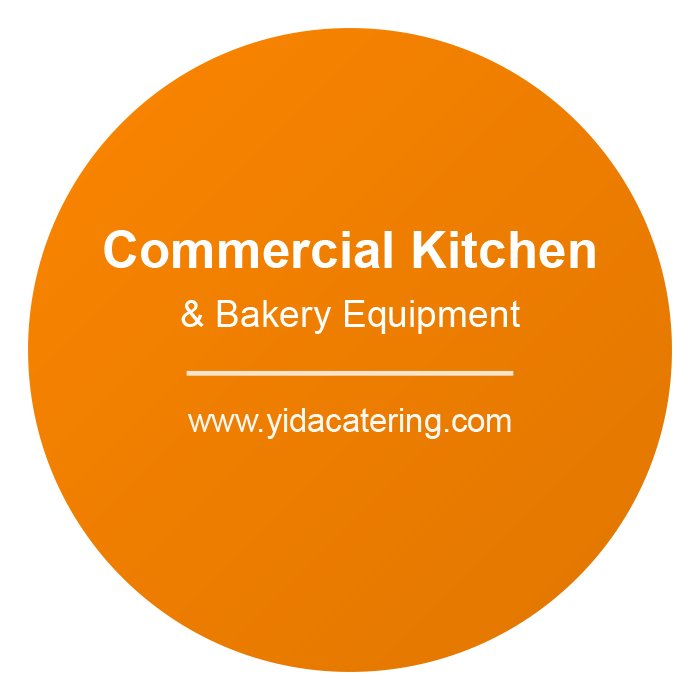Running a successful pizzeria or restaurant isn’t just about great recipes—it’s about efficiency, consistency, and delivering quality with every slice. The right pizza-making machines can transform your business, helping you streamline operations, reduce costs, and ensure customer satisfaction. Whether you’re a small café or a high-volume pizzeria, understanding the essential pizza-making equipment is crucial for scaling your business effectively.
In this blog, we’ll explore the must-have pizza-making machines, their features, and how they can benefit your business.
Why You Need Pizza-Making Machines
Investing in pizza-making machines isn’t just about convenience—it’s about empowering your business. Here’s why these tools are indispensable:
- Consistency: Machines ensure uniform dough thickness, sauce distribution, and topping application, which are critical for maintaining quality.
- Time-Saving: Automation speeds up preparation, allowing you to serve more customers in less time.
- Cost-Efficiency: By reducing waste and labor costs, these machines can improve your bottom line.
- Scalability: As demand grows, machines can handle higher production volumes without compromising quality.
The Essential Pizza-Making Machines
1. Dough Mixers
The foundation of any pizza is its dough. A high-quality dough mixer ensures the ingredients are blended evenly, creating a smooth, elastic dough that’s easy to work with.
Key Features:
- Multiple speed settings for different dough types.
- Large bowl capacities for high-volume production.
- Durable stainless steel construction for longevity.
Benefits:
- Saves time compared to manual mixing.
- Produces consistent dough quality for every batch.
2. Dough Sheeters
Rolling out dough by hand can be time-consuming and inconsistent. Dough sheeters streamline this process, ensuring uniform thickness and texture.
Types of Dough Sheeters:
- Tabletop Models: Compact and ideal for small spaces.
- Floor-Standing Models: Designed for high-volume operations.
- Reversible Sheeters: Allow dough to be rolled in both directions for precision.
Key Features:
- Adjustable thickness settings.
- Easy-to-clean rollers.
- Options for manual or automatic operation.
Benefits:
- Ensures consistent crusts, reducing preparation time.
- Handles large batches efficiently.
3. Pizza Ovens
The oven is the heart of any pizzeria. Choosing the right type of oven depends on your business size, menu, and production needs.
Types of Pizza Ovens:
- Deck Ovens: Ideal for traditional pizzas, offering even heat distribution.
- Conveyor Ovens: Perfect for fast-paced environments, as they cook pizzas quickly and consistently.
- Wood-Fired Ovens: Adds a smoky, authentic flavor, ideal for artisan or gourmet pizzas.
Key Features:
- Adjustable temperature controls.
- Durable construction for long-term use.
- Energy-efficient designs to reduce operating costs.
Benefits:
- Enhances the flavor and texture of pizzas.
- Accommodates various pizza styles and sizes.
4. Sauce Dispensers
Applying sauce evenly across the pizza base is crucial for flavor consistency. A sauce dispenser ensures the perfect amount is applied every time.
Key Features:
- Adjustable portion settings.
- Easy-to-clean components.
- Compatible with various sauce types.
Benefits:
- Reduces waste and speeds up preparation.
- Ensures every pizza has a consistent flavor profile.
5. Topping Stations
A well-organized topping station can significantly improve your kitchen’s efficiency. These refrigerated units keep ingredients fresh and accessible.
Key Features:
- Multiple compartments for organized storage.
- Stainless steel construction for durability.
- Refrigerated surfaces to maintain ingredient freshness.
Benefits:
- Speeds up the topping process.
- Reduces food waste by keeping ingredients fresh.
6. Dough Dividers and Rounders
For businesses producing large quantities of pizza, dough dividers and rounders are game-changers. These machines divide and shape dough into uniform portions, ready for sheeting.
Key Features:
- Adjustable settings for different portion sizes.
- High-speed operation for efficiency.
- Compact designs for space-saving.
Benefits:
- Saves hours of manual labor.
- Ensures consistent dough portions for every pizza.
7. Cheese Graters
Freshly grated cheese enhances the flavor and presentation of your pizzas. A commercial cheese grater ensures you always have a supply of freshly shredded cheese.
Key Features:
- High-speed grating for efficiency.
- Durable blades for long-term use.
- Compact designs for easy storage.
Benefits:
- Saves time compared to manual grating.
- Ensures consistent cheese texture and quality.
8. Pizza Cutters and Portioners
Once the pizza is baked, cutting it into perfect slices is the final step. Commercial pizza cutters and portioners ensure every slice is uniform, enhancing presentation and customer satisfaction.
Key Features:
- Ergonomic designs for ease of use.
- Durable blades for clean cuts.
- Options for different pizza sizes.
Benefits:
- Improves portion control.
- Enhances the visual appeal of your pizzas.
Factors to Consider When Choosing Pizza-Making Machines
When selecting equipment for your pizzeria, consider the following:
- Production Volume: Choose machines that can handle your daily output without bottlenecks.
- Space Availability: Ensure you have enough room for the equipment, including clearance for maintenance.
- Budget: While quality machines may have a higher upfront cost, they offer better long-term value.
- Ease of Use: Look for user-friendly designs that minimize the learning curve for your staff.
- Maintenance Requirements: Opt for machines with easy-to-clean components to save time and effort.
Maintenance Tips for Pizza-Making Machines
To maximize the lifespan and efficiency of your equipment:
- Clean Regularly: Wipe down machines after each use to prevent buildup and ensure hygiene.
- Inspect Components: Check for wear and tear on parts like rollers, blades, and motors.
- Follow Manufacturer Guidelines: Adhere to maintenance instructions provided by the manufacturer.
- Lubricate Moving Parts: Keep rollers and other moving components well-lubricated for smooth operation.
Conclusion
From dough preparation to baking and slicing, the right pizza-making machines can transform your business operations. By investing in high-quality equipment, you’ll not only improve efficiency but also ensure every pizza you serve meets the highest standards of quality and consistency.
Whether you’re a small café or a high-volume pizzeria, these machines are essential for delivering the perfect pizza every time. Take the next step in growing your business by equipping your kitchen with the tools that will delight your customers and keep them coming back for more!

